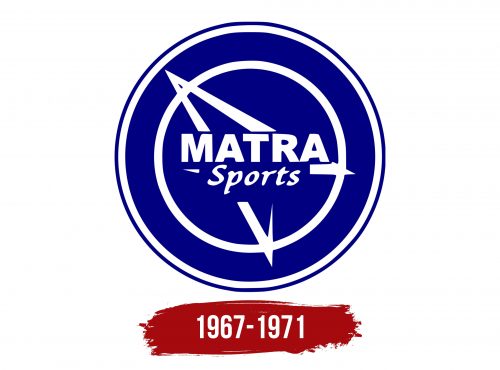The Matra Sports logo resembles a dartboard target. The emblem compares crossing the finish line in races to throwing a dart. The company’s team always hits the mark, racing to victory like a swift rocket. Their success is due to two factors: excellent cars and experienced drivers.
Matra Sports: Brand overview
Matra Sports emerged in 1965 under the vision of Jean-Luc Lagardère and Marcel Chassagny. It was a larger Matra corporation branch known for its aerospace and defense expertise.
With a mission to dominate motorsports, the company quickly made waves. 1969, the team clinched the Formula 1 Constructors’ Championship with Jackie Stewart at the wheel. The 24 Hours of Le Mans saw the company’s triumph in 1972, 1973, and 1974, solidifying its racing legacy.
The late 1960s marked the company’s foray into high-performance road cars. The debut of the mid-engine Matra Djet in 1967 paved the way for future models. The Matra 530, a sleek fastback coupe with a fiberglass body, and the futuristic three-seater Matra Bagheera followed suit.
In the 1970s, the company collaborated with Simca, a French automaker under Chrysler Europe. This partnership birthed the Matra-Simca Rancho, a pioneering crossover with a fiberglass body. The innovative Matra Simca Bagheera, a three-seater sports coupe with a fiberglass-reinforced plastic body, debuted in 1973.
In 1980, Peugeot acquired Chrysler Europe’s operations, including Matra Sports. Under Peugeot’s wing, the company introduced the Matra Murena, a mid-engine three-seater sports coupe. Financial hurdles and declining sales in the 1980s led to the end of road car production in 1983.
The company continued to shine in motorsports during the 1980s and 1990s, focusing on endurance racing. The company also specialized in designing and manufacturing car bodies for other automakers, notably for Renault’s Espace and Avantime models. In 2003, the company’s body manufacturing division was sold to Pininfarina.
The company carved a unique path in automotive history, renowned for its racing prowess and groundbreaking vehicle designs. The brand’s legacy endures and is celebrated for its contributions to the racetrack and innovative road cars.
Meaning and History
What is Matra Sports?
Matra Sports is a French company with roots in the automotive and aerospace industries. Known for its success in motorsports, including Formula One and endurance racing, Matra produced high-performance sports cars and was celebrated for its engineering excellence and competitive spirit.
1967 – 1971
The logo for Matra Sports features a blue circle with two white concentric rings, creating a visually appealing and symbolically rich design. In the circle’s center, an arrow represents a rocket or a track indicator, signifying direction and movement. This element embodies the pursuit of speed and progress.
The company name, Matra, is written in white letters in the middle of the logo. Matra stands for Mécanique Aviation Traction, highlighting the company’s diverse activities. Besides automotive manufacturing, Matra was also involved in the aerospace and defense industries, as reflected in the emblem.
The rocket in the center is part of the parent company’s logo and symbolizes its aerospace endeavors. The circle surrounding the arrow can be seen as the Earth, with the two rings symbolically dividing the terrestrial and celestial areas of the company’s operations.
The Matra Sports logo is infused with themes of speed and dynamics. The sharp angles of the inner arrow extend beyond the lines of the figure, emphasizing the company’s drive for excellence and its ambition to achieve more.





